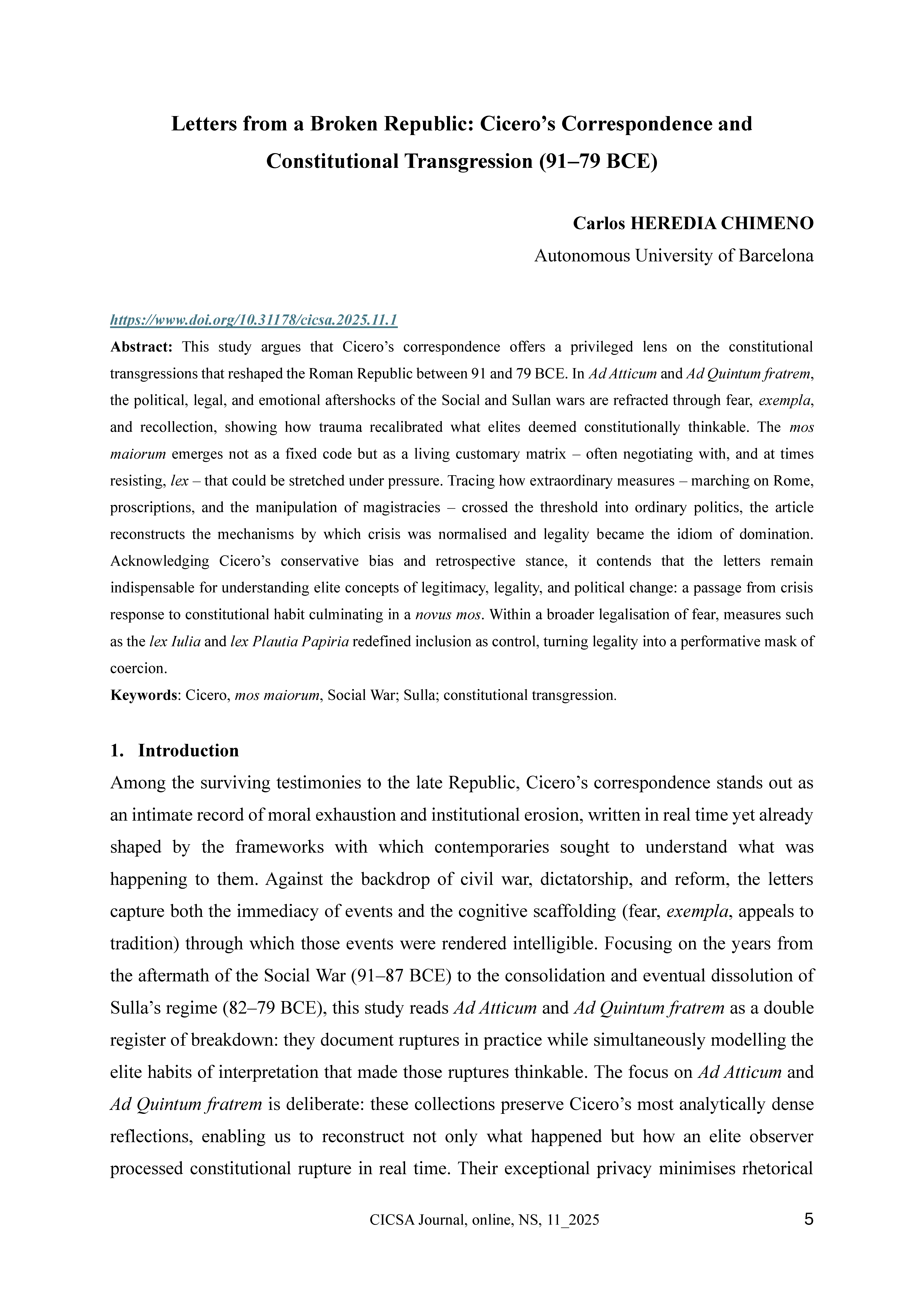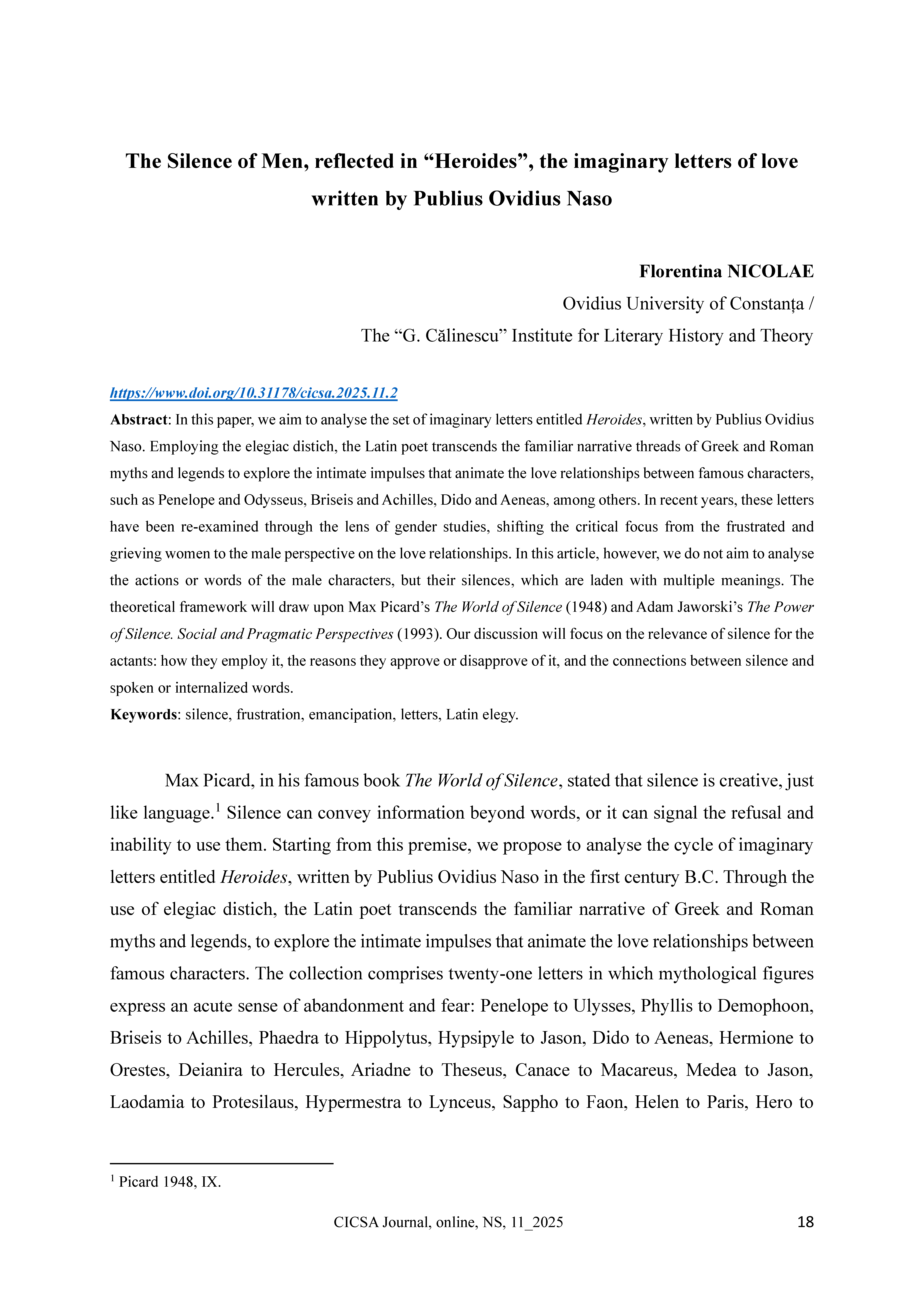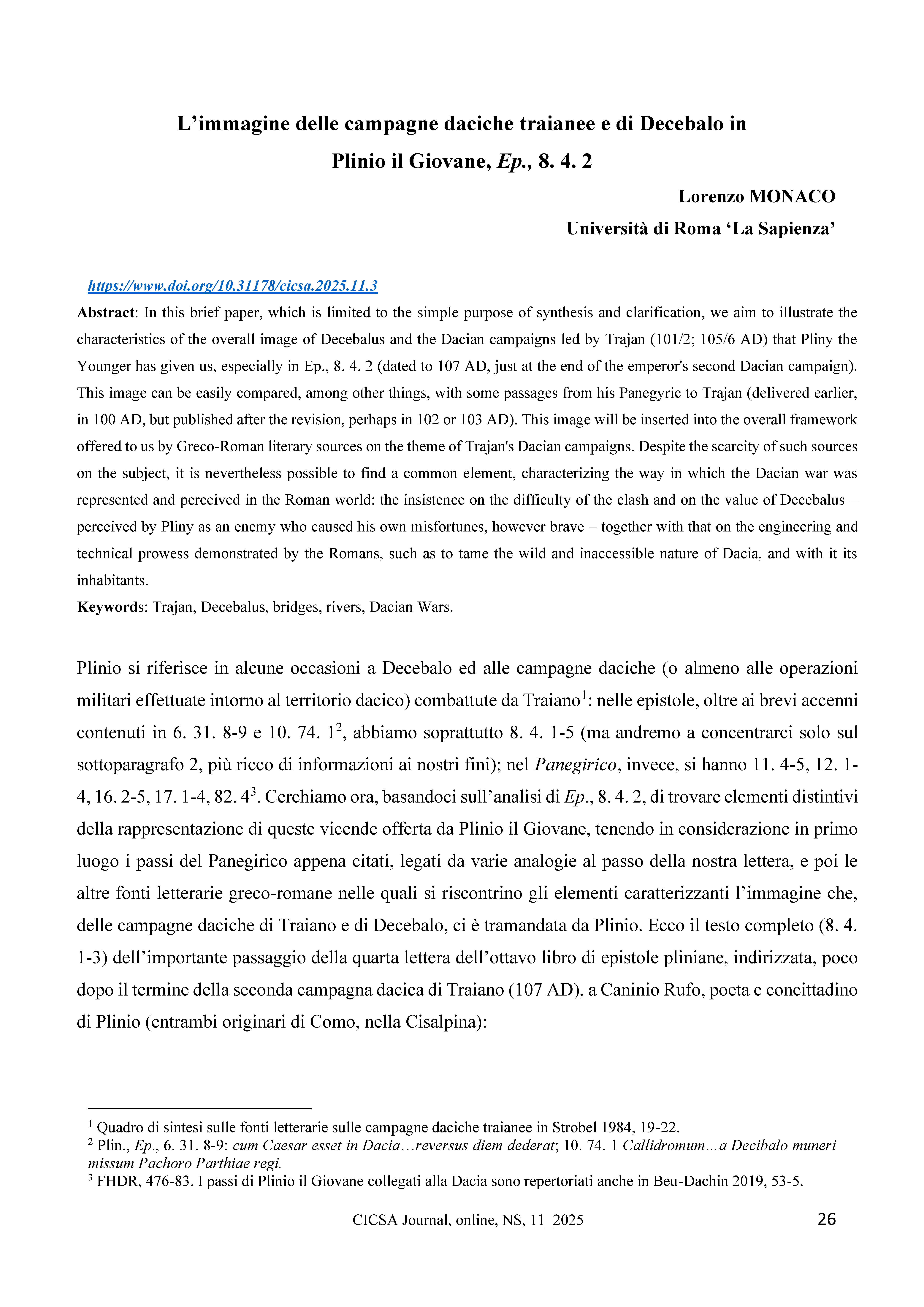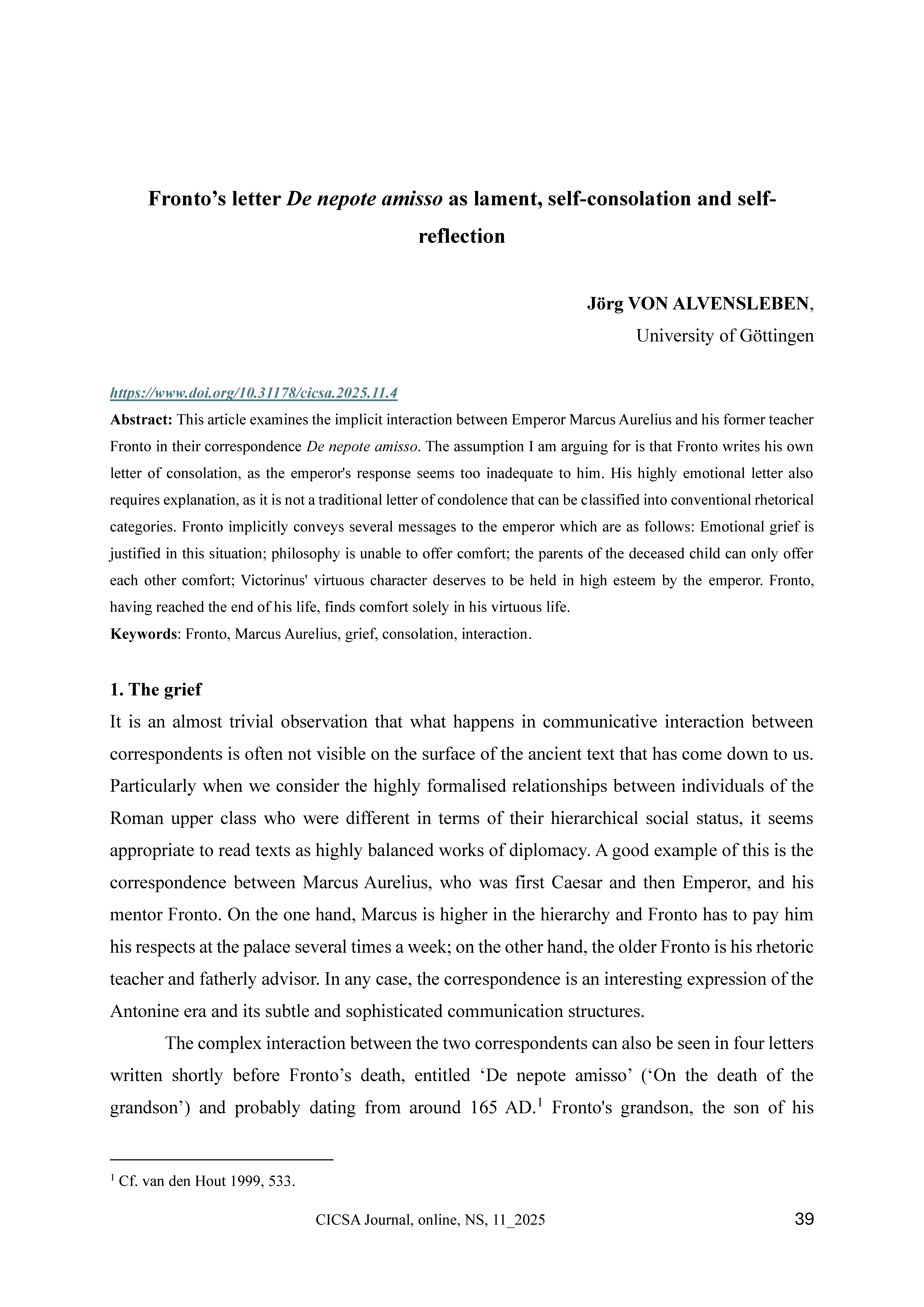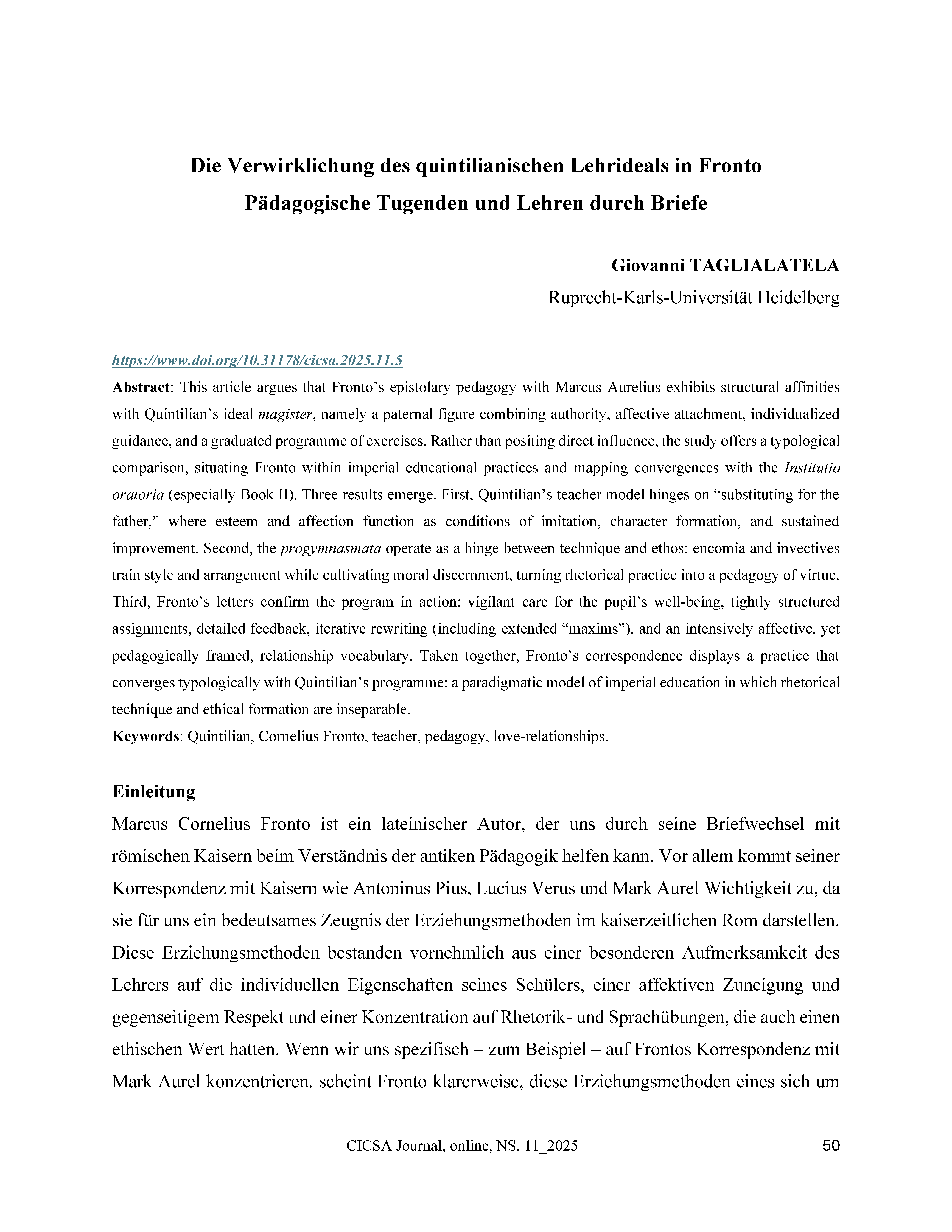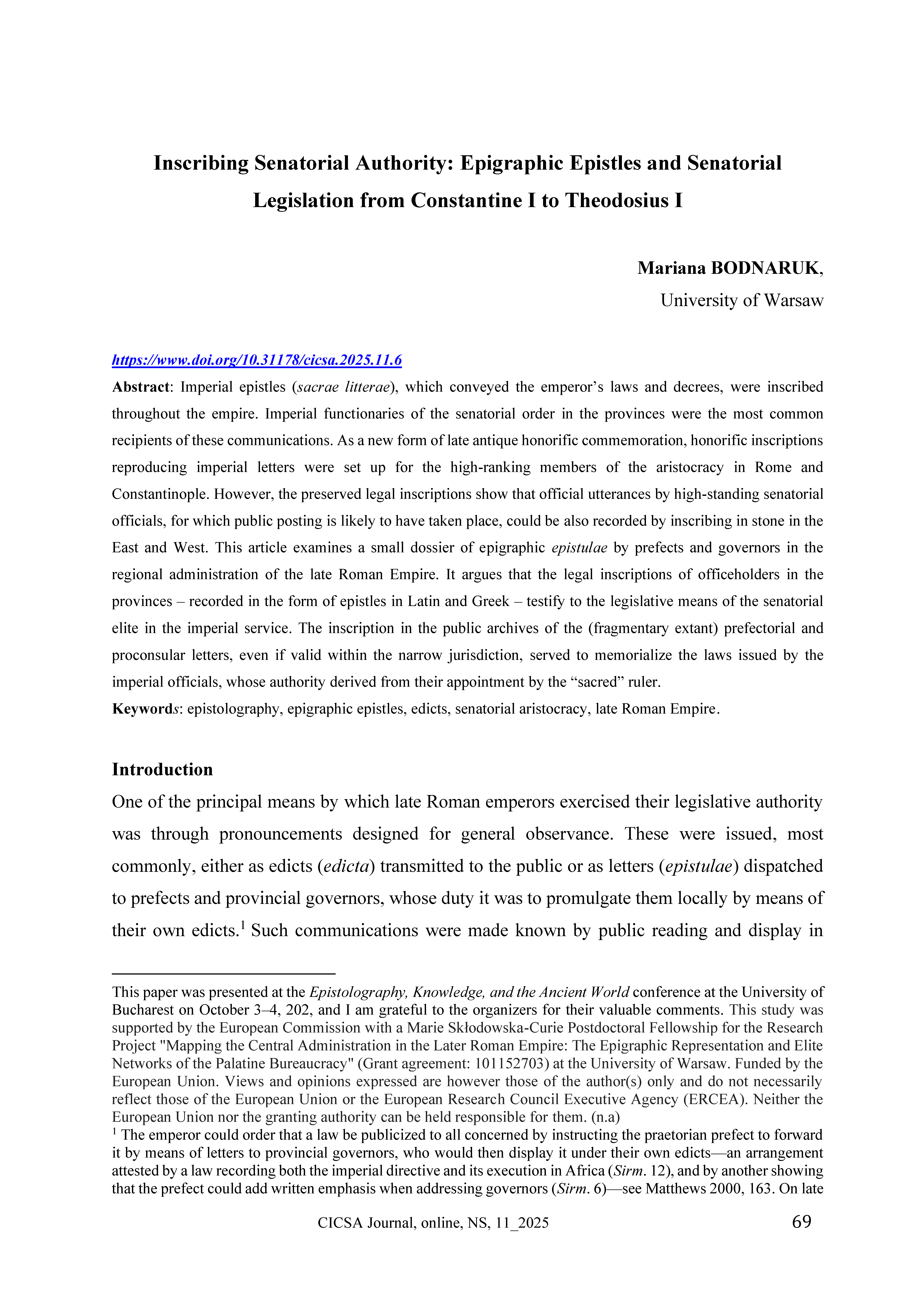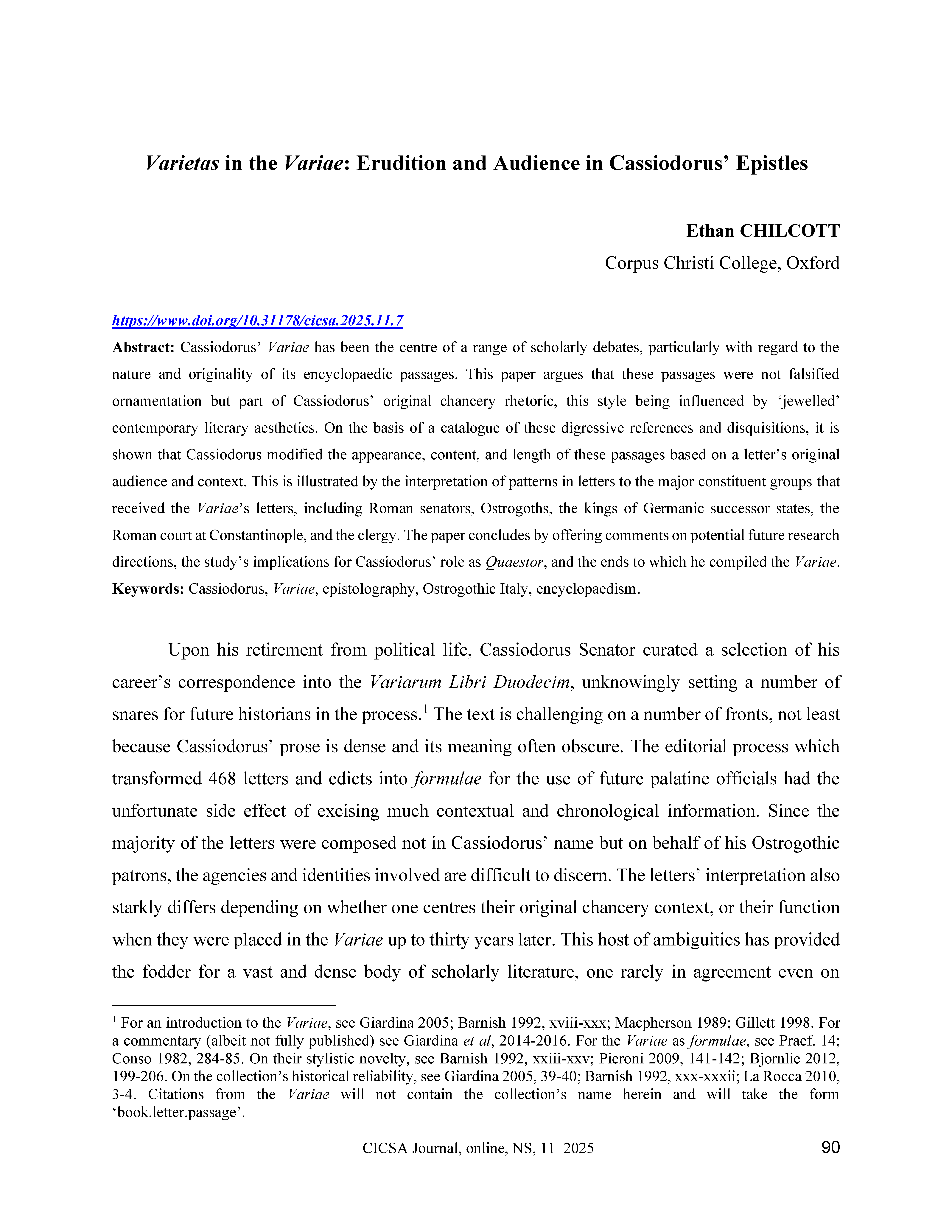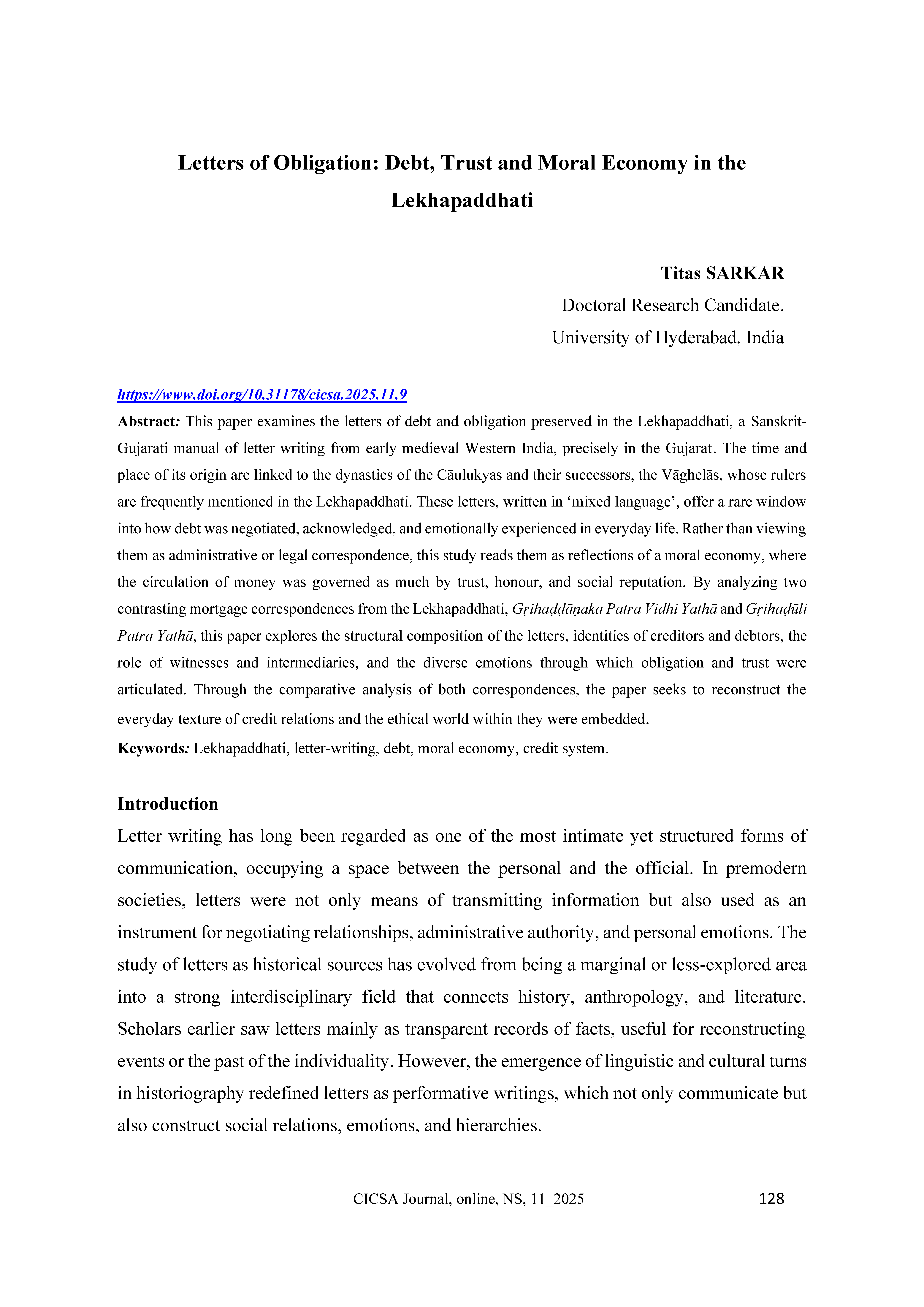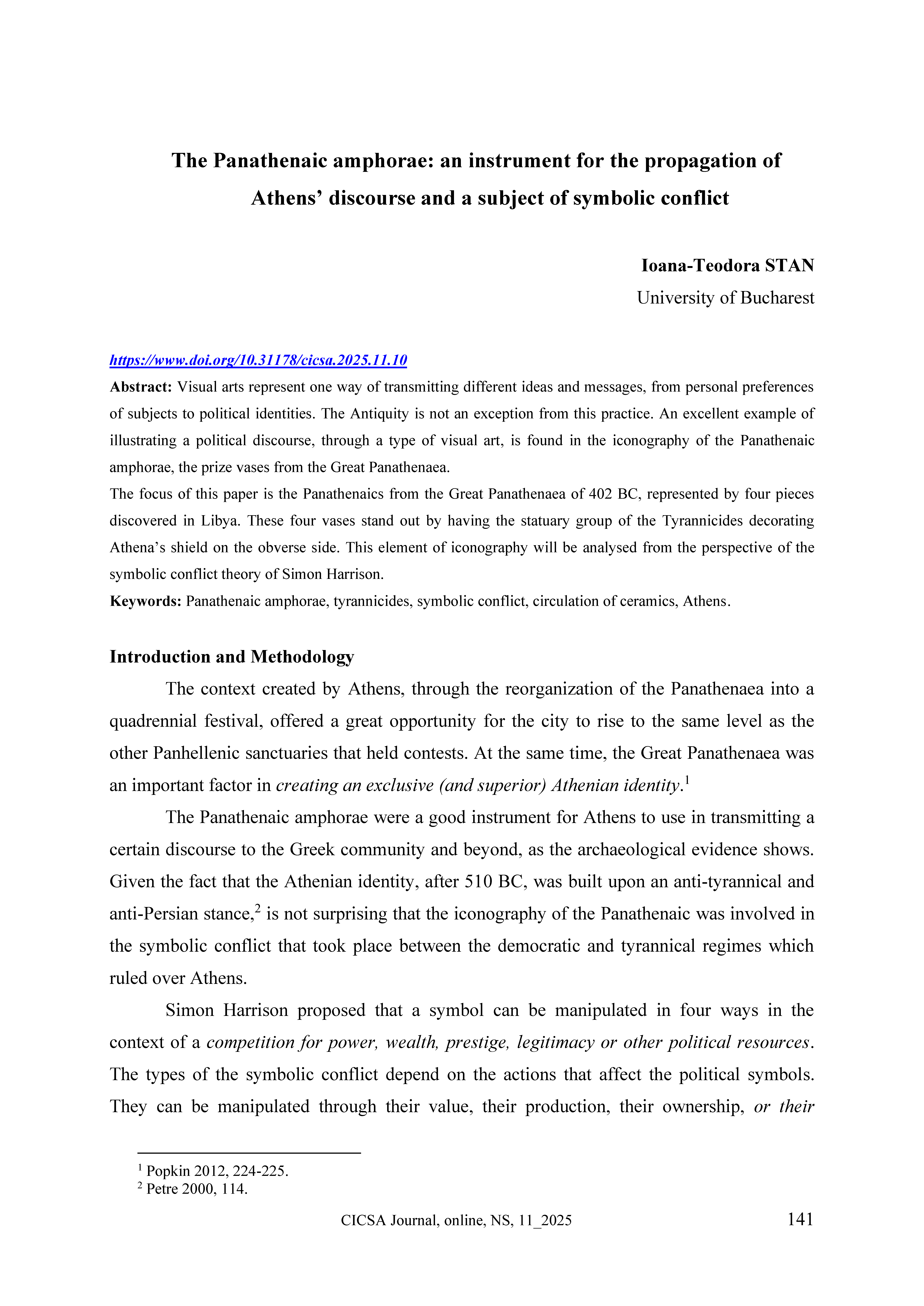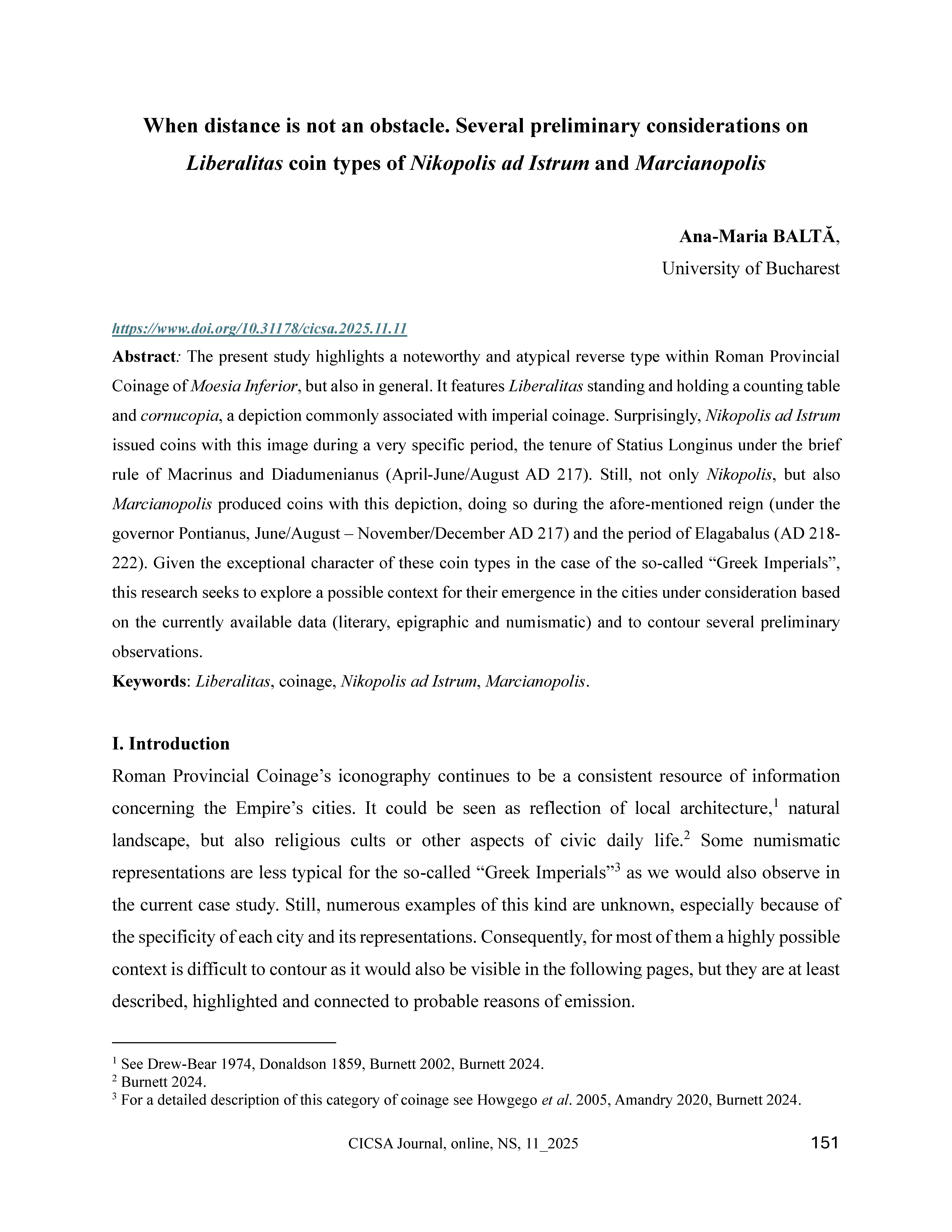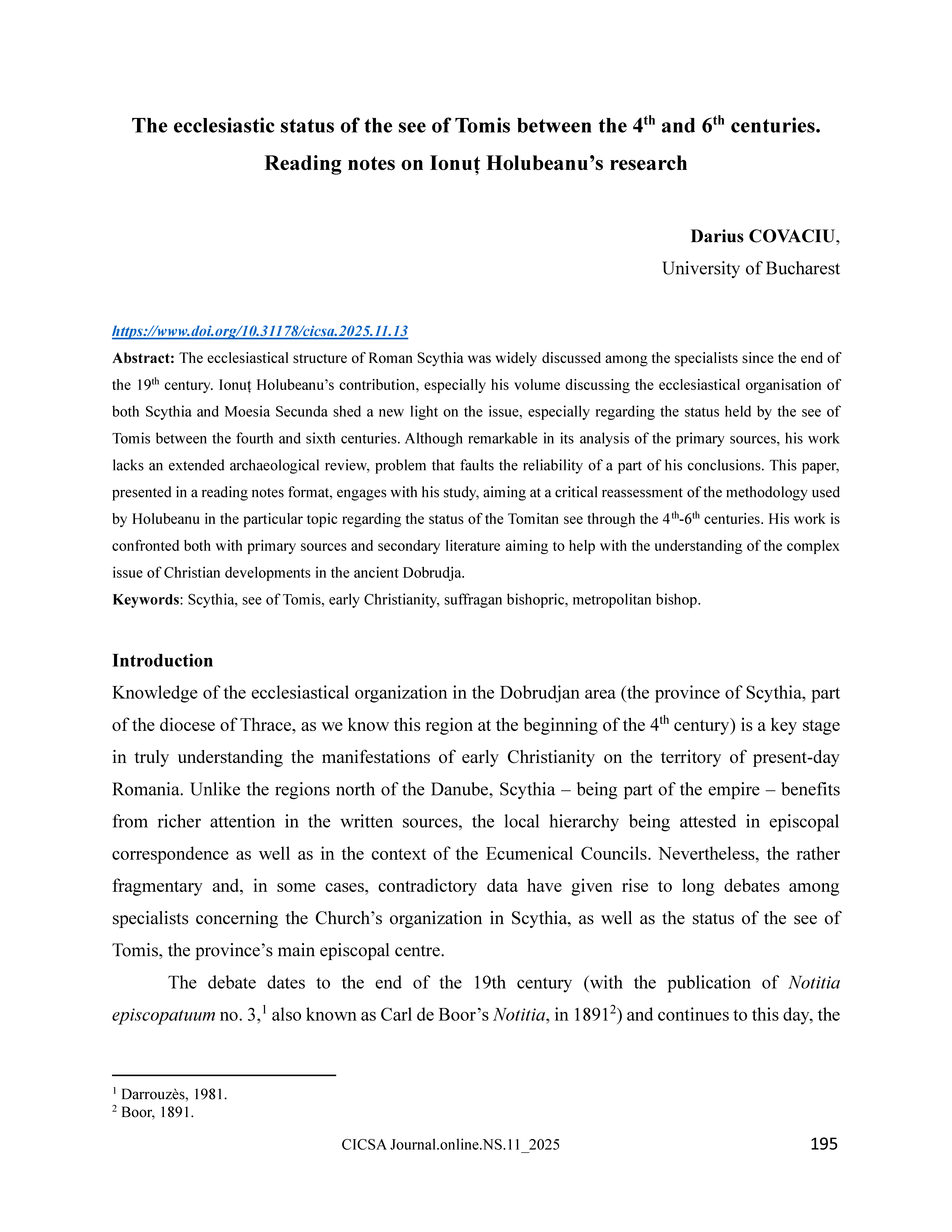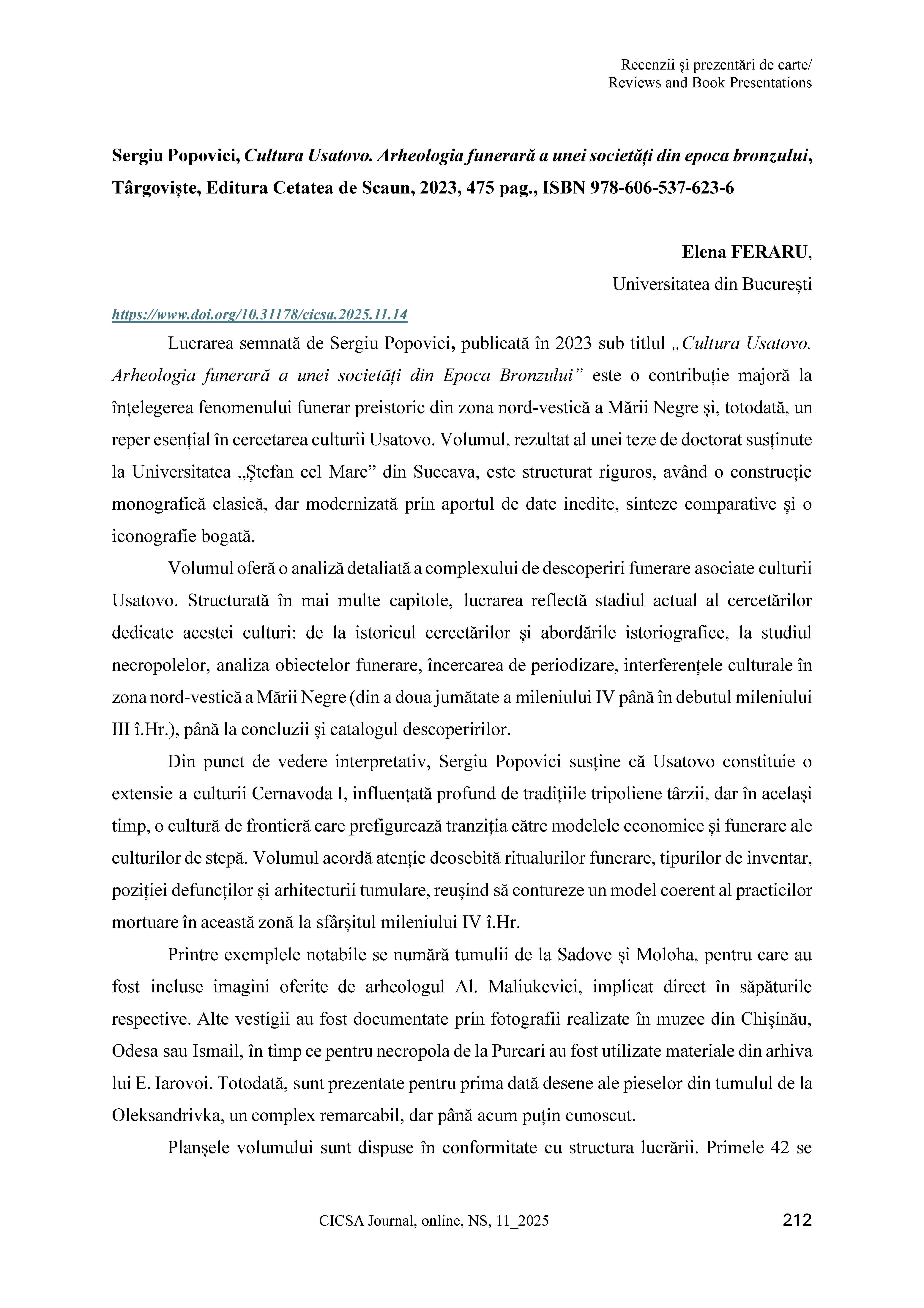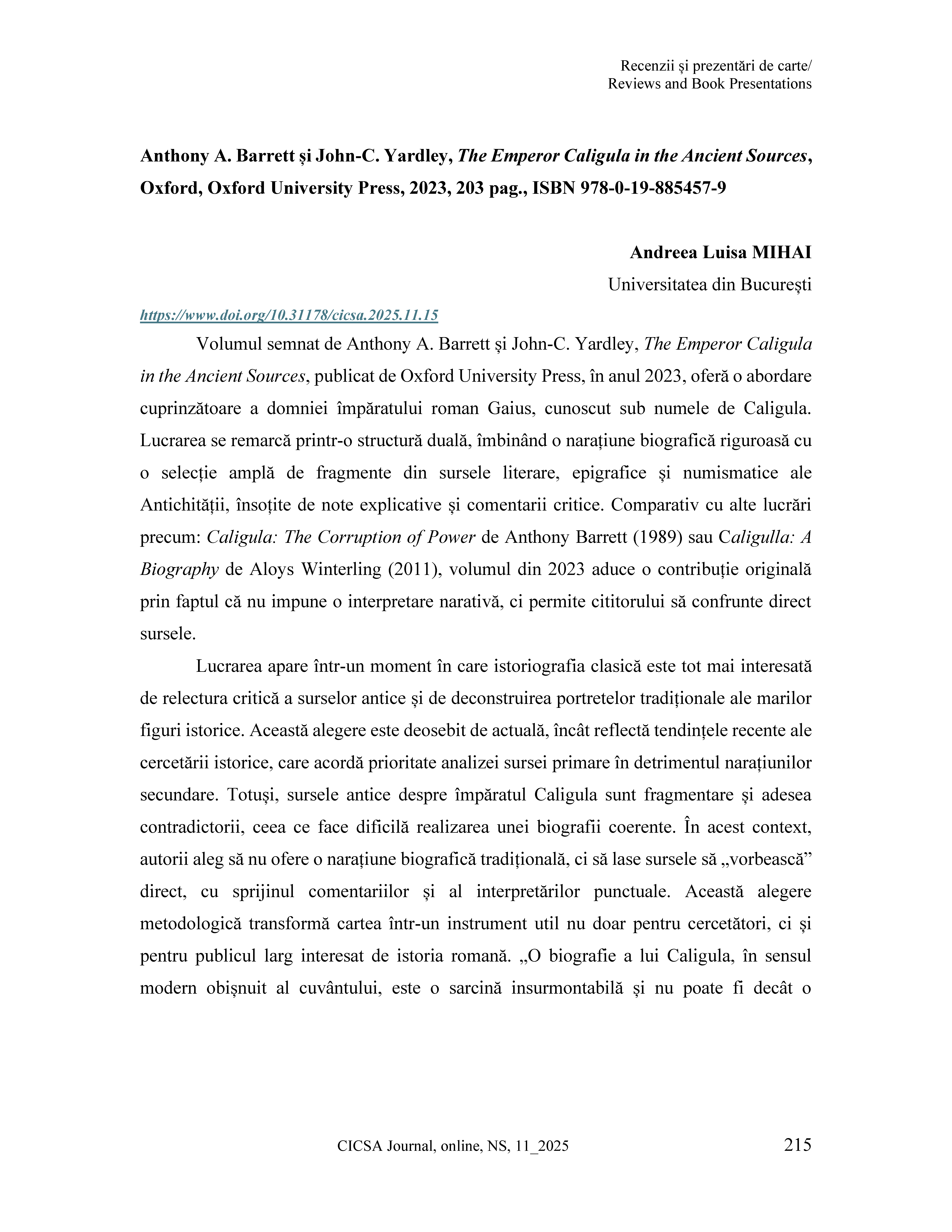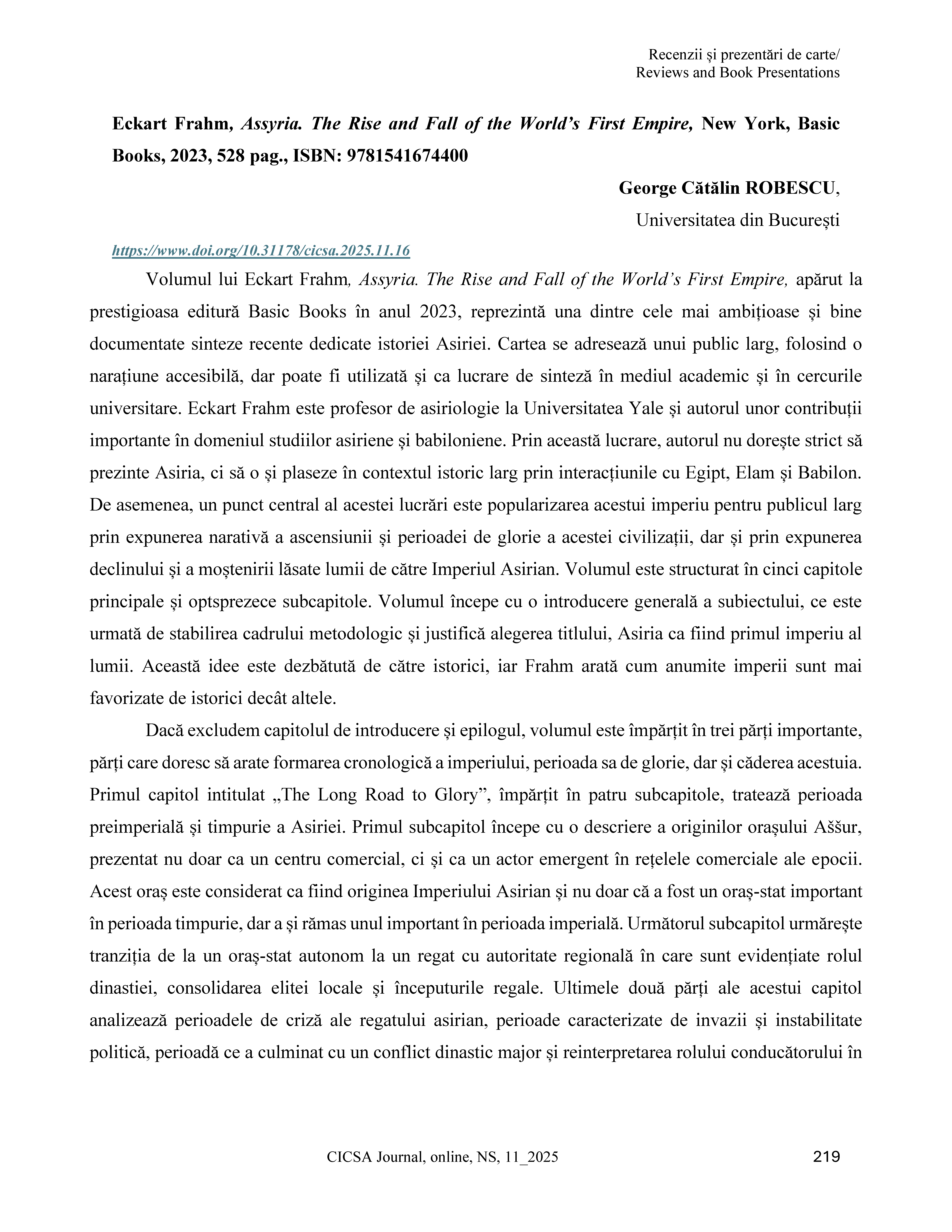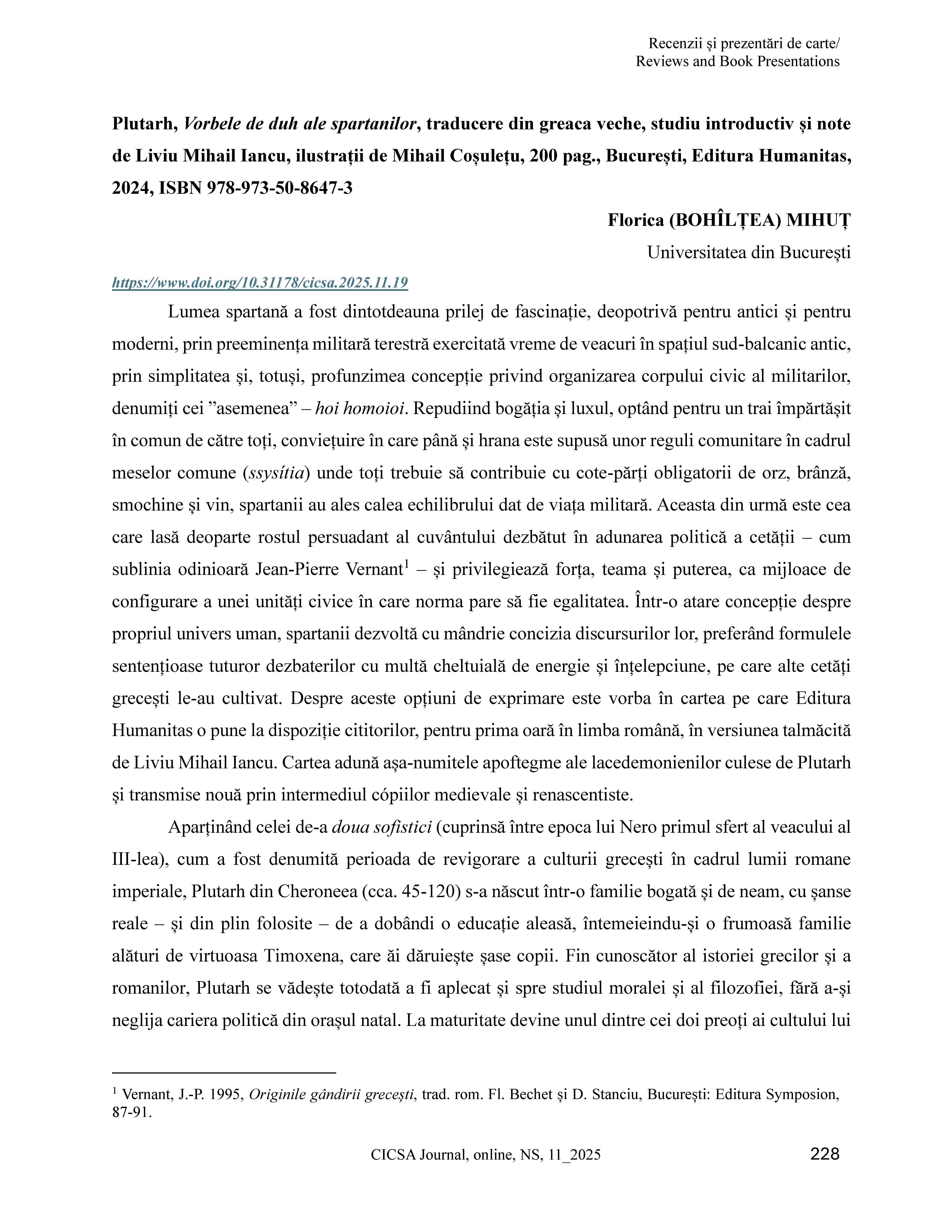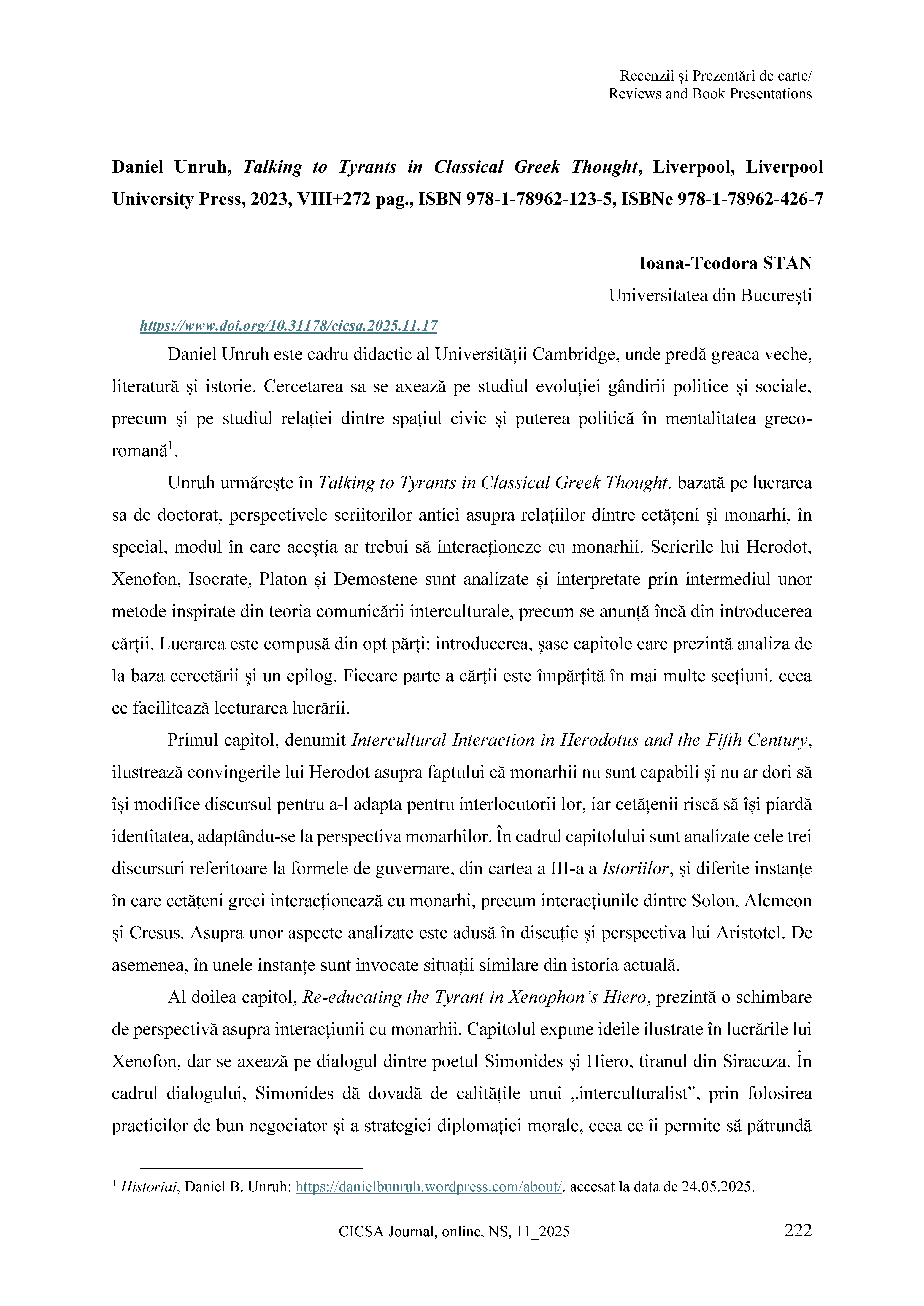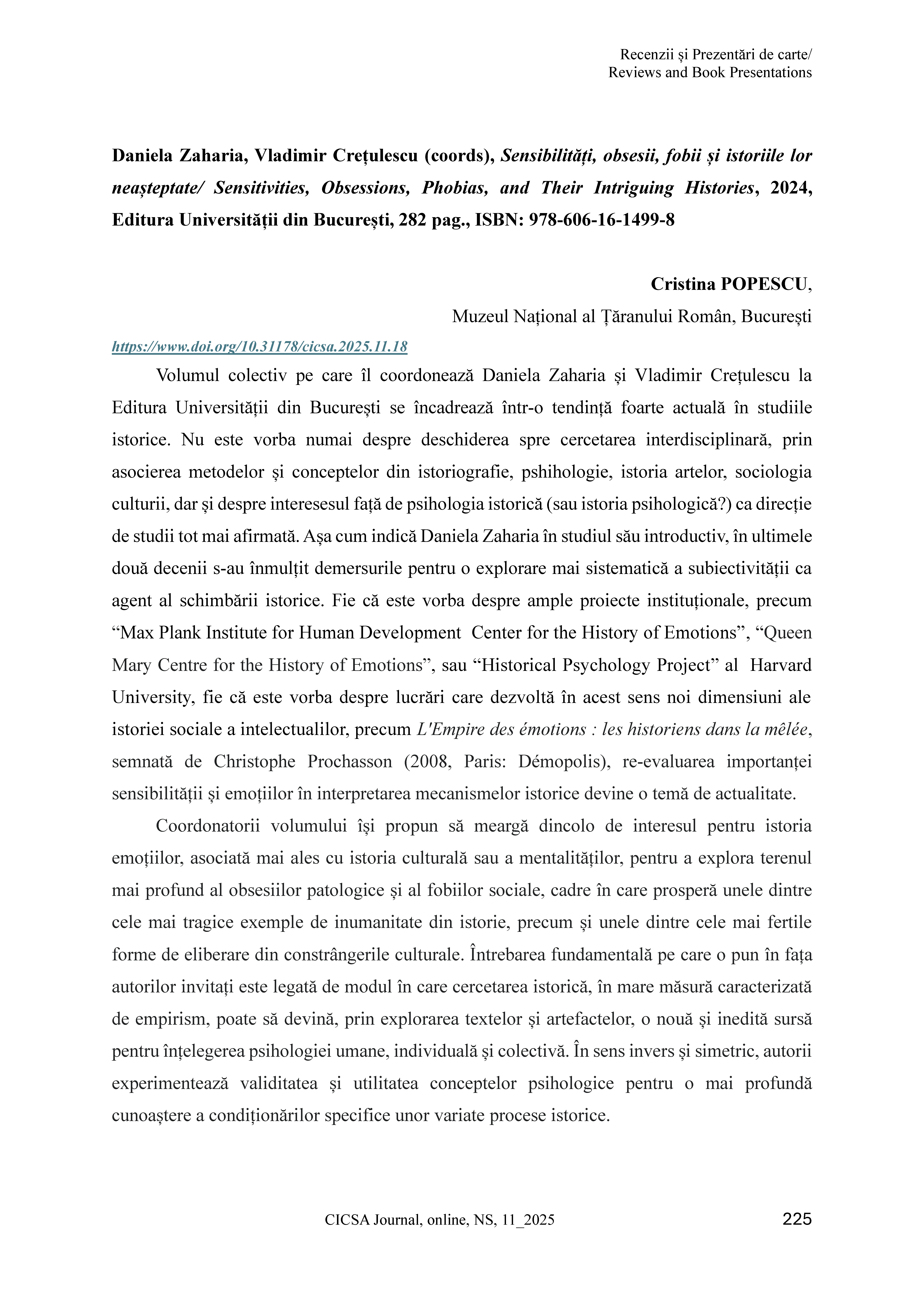Despre revistă
CICSA Journal, New Series is an annual online peer reviewed publication of the Center for Comparative History of Ancient Societies (CICSA) which includes studies, articles (written in French, English, German, Italian or Spanish), book reviews and book presentations in History, Ancient History, Archaeology, Art, Cultural History, Cultural Studies.
The published material represents mainly the research conducted at the Center, the presentations in its monthly and annual sessions, but also other multidisciplinary approaches on topics related to the mentioned above areas of research.
Număr curent
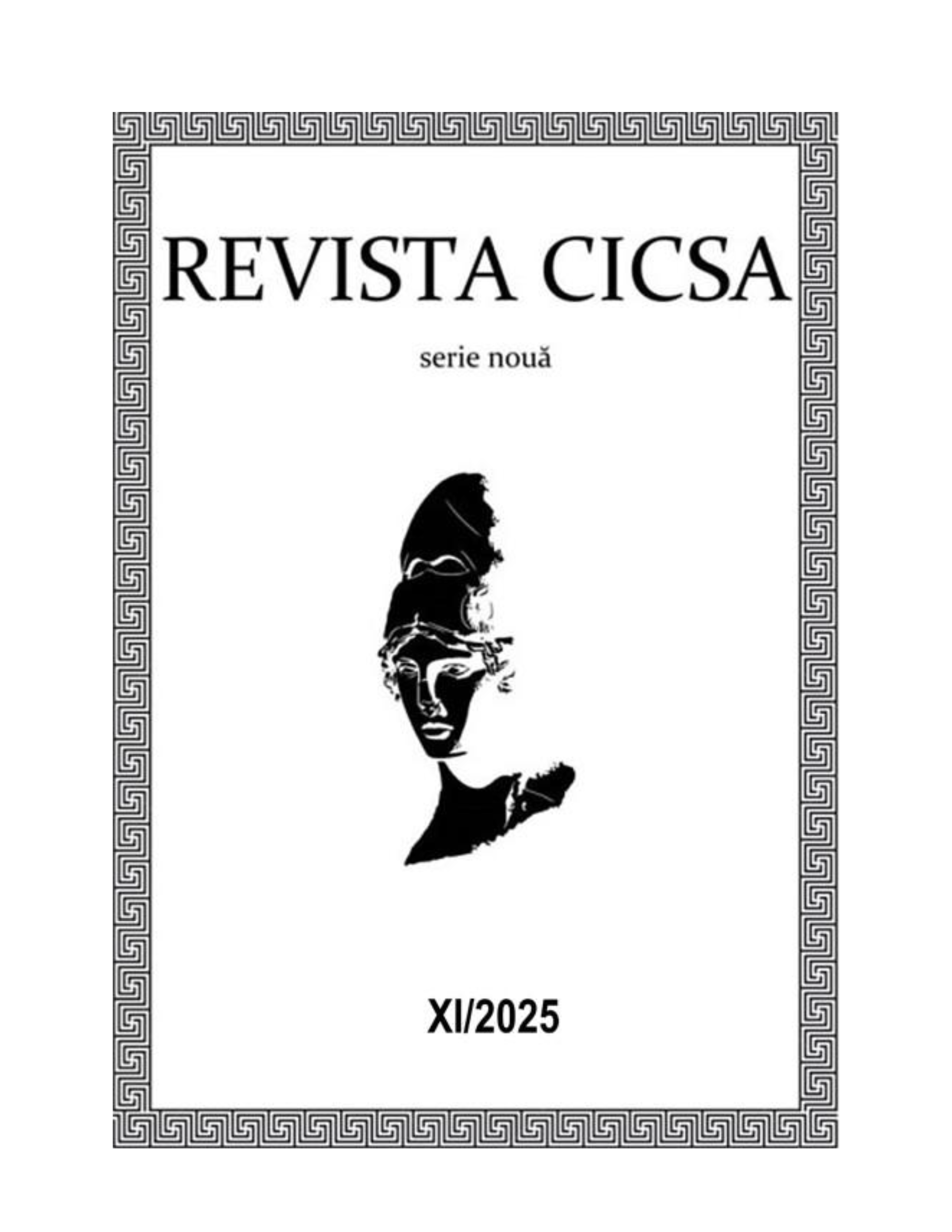
The published material represents mainly the research conducted at the Center, the presentations in its monthly and annual sessions, but also other multidisciplinary approaches on topics related to the mentioned above areas of research.

